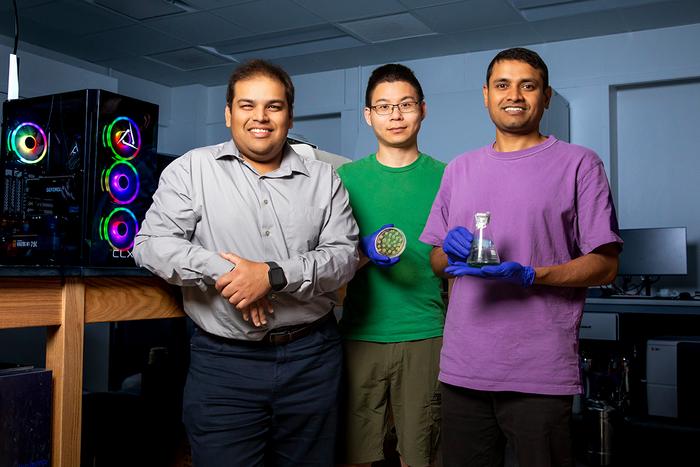Ai Digital Biology
Bioengineers Create Bacteria-Yeast Hybrids for Energy And Pharma Advances
Study showcases how engineered cyanobacteria-yeast hybrids could pave the way for non-petroleum-based energy and synthetic biology breakthroughs
Aug 29, 2024
[DALL-E]
In a breakthrough that could revolutionize synthetic biology and energy production, researchers have engineered a hybrid of bacteria and yeast capable of performing photosynthesis, generating energy, and growing without relying on traditional carbon sources like glucose or glycerol. By incorporating photosynthetic cyanobacteria into yeast cells, these innovative hybrids open new pathways to non-petroleum-based energy, synthetic biology applications, and provide a unique lens through which to study evolution.

“All eukaryotic cells—those with a nucleus—also contain organelles like mitochondria and chloroplasts, each with its own DNA,” explains Angad Mehta, a chemistry professor at the University of Illinois Urbana-Champaign, who led the all-Illinois research team. “There’s long been a theory that complex life forms emerged when one of these cells merged with another through endosymbiosis.”
In earlier research, Mehta’s team demonstrated that lab-created cyanobacteria-yeast chimeras, or endosymbionts, could generate ATP through photosynthesis to support yeast survival. However, these hybrids did not produce sugars. The latest study takes a significant leap forward by engineering cyanobacteria to break down sugars and secrete glucose. This innovation allowed the creation of chimeras that can thrive on CO2, utilizing the sugars and energy produced by the embedded bacteria.
Published recently in Nature Communications, the study lays the groundwork for transforming non-photosynthetic organisms into photosynthetic hybrids capable of generating valuable compounds like limonene—a simple yet crucial hydrocarbon found in citrus fruits.
“We develop a directed endosymbiosis approach to introduce carbon assimilation in budding yeasts,” the authors wrote. “Particularly, we engineer carbon assimilating and sugar-secreting photosynthetic cyanobacterial endosymbionts within the yeast cells, which results in the generation of yeast/cyanobacteria chimeras that propagate under photosynthetic conditions in the presence of CO2 and in the absence of feedstock carbon sources like glucose or glycerol.”
“Limonene is a molecule with significant commercial value,” says Mehta, who is also associated with the Carl R. Woese Institute for Genomic Biology. “This proof-of-concept demonstrates that we can engineer metabolic pathways within these hybrids to photosynthetically produce limonene, which belongs to the terpenoid class. Terpenoids are precursors to numerous high-value products, including fuels and drugs that combat cancer and malaria.”
Looking ahead, Mehta and his team aim to determine whether this method can produce more complex compounds, such as fuels and pharmaceuticals, and explore ways to scale the process for commercial viability.
“Imagine if we could ensure that every carbon atom in a high-value compound originated from CO2,” Mehta envisions. “This could pave the way for recycling CO2 waste on a massive scale.”
As they continue to refine endosymbiotic systems to push the boundaries of biotechnology, the researchers are also poised to unlock answers to fundamental evolutionary questions. “These insights will come naturally as we advance our work,” Mehta notes. “The best approach to engineering endosymbiotic systems may lie in replicating evolutionary processes within the lab. Along the way, we might just solve some of biology’s greatest mysteries.”


















